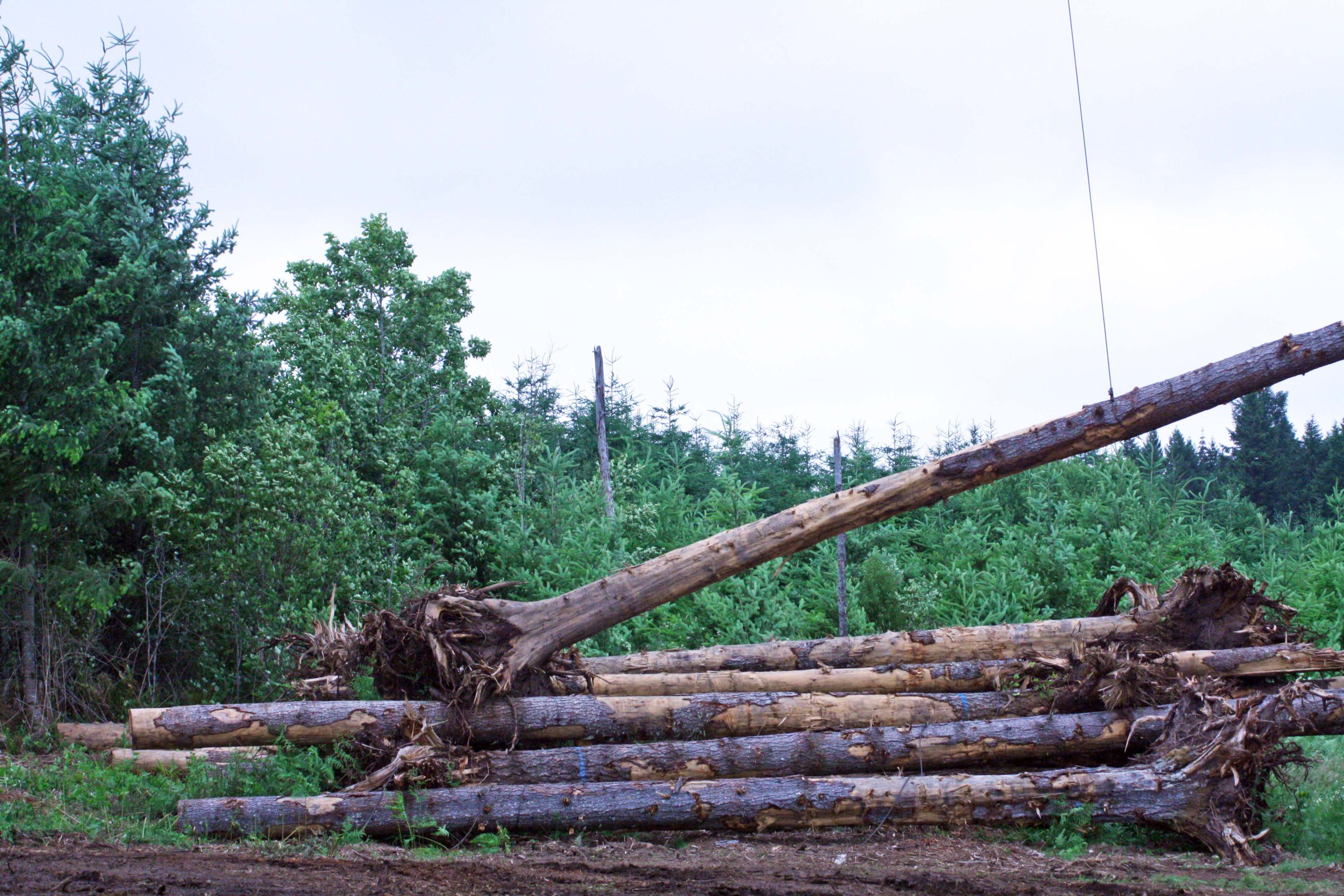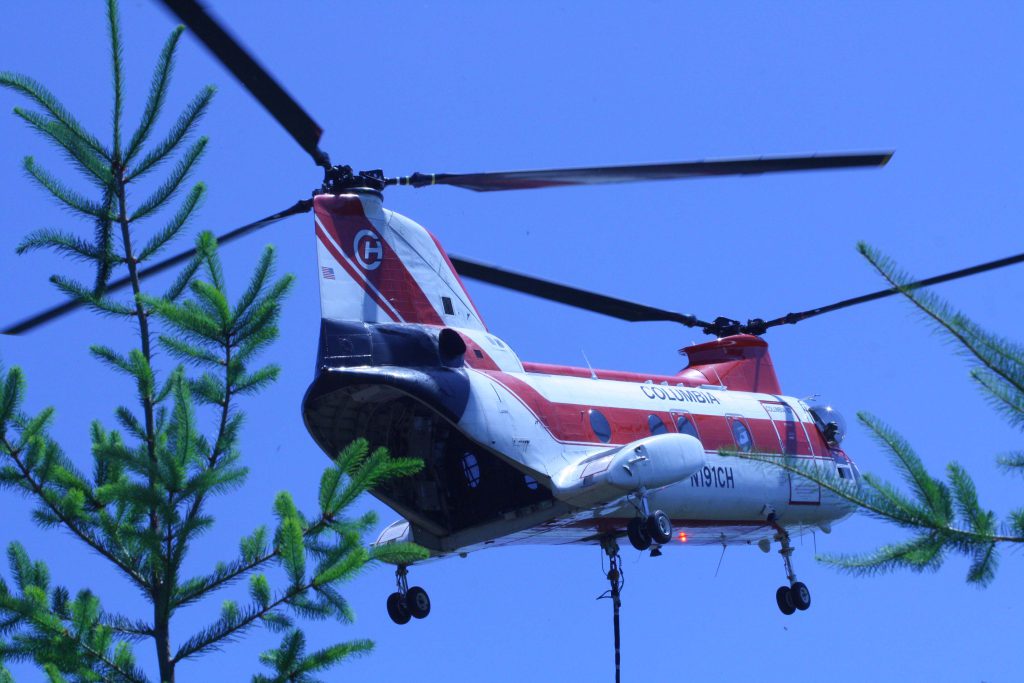
August 25, 2024
Estacada, OR – Neighbors and passersby may see two large helicopters placing logs in the North Fork Eagle and Bear Creeks during the first few days of September. The Clackamas River Basin Council (CRBC) is adding large wood to these two tributaries of Eagle Creek to improve habitat for threatened and endangered native fish species.
Large wood is an important component for the creation and maintenance of salmon habitat in our local streams. Downed trees create habitat by forcing the stream to meander around, under and over the wood creating areas for fish to hide from predators, rest and feed.
Wood also creates shaded areas in streams, reducing solar radiation and helping to maintain cooler water temperatures. This is especially important as climate change can lead to higher air and water temperatures, which can stress aquatic life, particularly cold-water species like salmon and trout. Large wood can also stabilize sediment, decrease flow and create pools, and contribute to nutrient cycling.
This fish habitat project will take place between September 1-3, 2024 between Eagle Fern Park and extending up to the Dover community near Betty Road.
The Clackamas River Basin Council is working with contractors Biohabitats and Columbia Helicopters to place the logs which will not fly over any public roads or electric power lines. A smaller, Vertol helicopter will be active the first two days and a large, Chinook helicopter will be active on the last day of the project. Signs are installed along Eagle Fern, George and Kitzmiller Roads to notify residents of this upcoming project.
The Clackamas River Basin Council is spearheading this project with Board Member David Bugni as the Project Manager. It is supported by the Bureau of Land Management, Portland General Electric, the Clackamas Soil and Water Conservation District, and several private landowners in the community who are providing some logs and project services.
The Clackamas River Basin Council is a 501(c)(3) nonprofit with the mission of fostering partnerships for clean water and to improve fish and wildlife habitat and the quality of life for those who live, work and recreate in the watershed.


